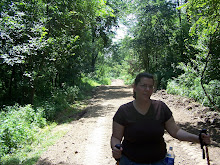
Alexander is a regular mouse. He scrounges for food and lives in a hole in the wall. The people in the house chase him away every time they see him and he is sad that no one seems to love him. Then he meets Willy, a wind-up mouse who is a favorite toy of the girl in the house. She takes Willy everywhere and loves him. Alexander wants to be a wind-up mouse and be loved too. One day Willy tells him of a magic lizard that can turn one creature into another. The lizard tells Alexander he will need a purple pebble to work the magic. When he can’t find the pebble, he returns to Willy who has been thrown into a box. The family is getting rid of some toys including the wind-up mouse. Just then, Alexander finds the pebble. He rushes to the lizard and asks to change Willy into a real mouse. When he goes to find the box, it is empty. Alexander is crestfallen until he returns home and finds a familiar friend in his hole in the wall.
The story, like a Prince and the Pauper tale, is based on the idea of wanting to be something you are not. Like many of the mouse books I’ve read, Alexander is tired of being hated. He wants to be loved. And although Willy cannot move without being wound, Alexander sees that a wind-up mouse’s life would offer him love. But like all toys, children lose interest in them. Suddenly Willy’s life doesn’t seem so grand. Alexander sacrifices his own interests to help a friend. This is a sweet story about friendship but also about being happy with what you have. Lionni keeps the story and wording pretty simple, but the concepts are much deeper. I have to wonder how much of that I gathered when reading it as a child.
What I remember from my childhood was the images. I remember the matryoshka doll on the cover made from different types of wallpaper. I remember the two mice, one with its smooth gray finish and the other made from felt. I remember the night scene when Alexander makes the wish to change his friend into a real mouse. The sky is covered with tissue paper leaves and the strange gravel path. When I found the book for purchase, these were the things that I flipped to immediately. I didn’t remember the story, but I knew the images. I've stated many times before how much I love collage work for illustration. Successfully done collage can be far more interesting to me than painting. And Lionni is an artist. He takes various materials and creates images that can stay with me from my early childhood until adulthood. They remind me that illustration work doesn’t have to be painted. Like Ezra Jack Keats, Eric Carle, Lois Ehlert, and others, Lionni uses the materials at hand to bring some of the most memorable and lovable characters to life.

